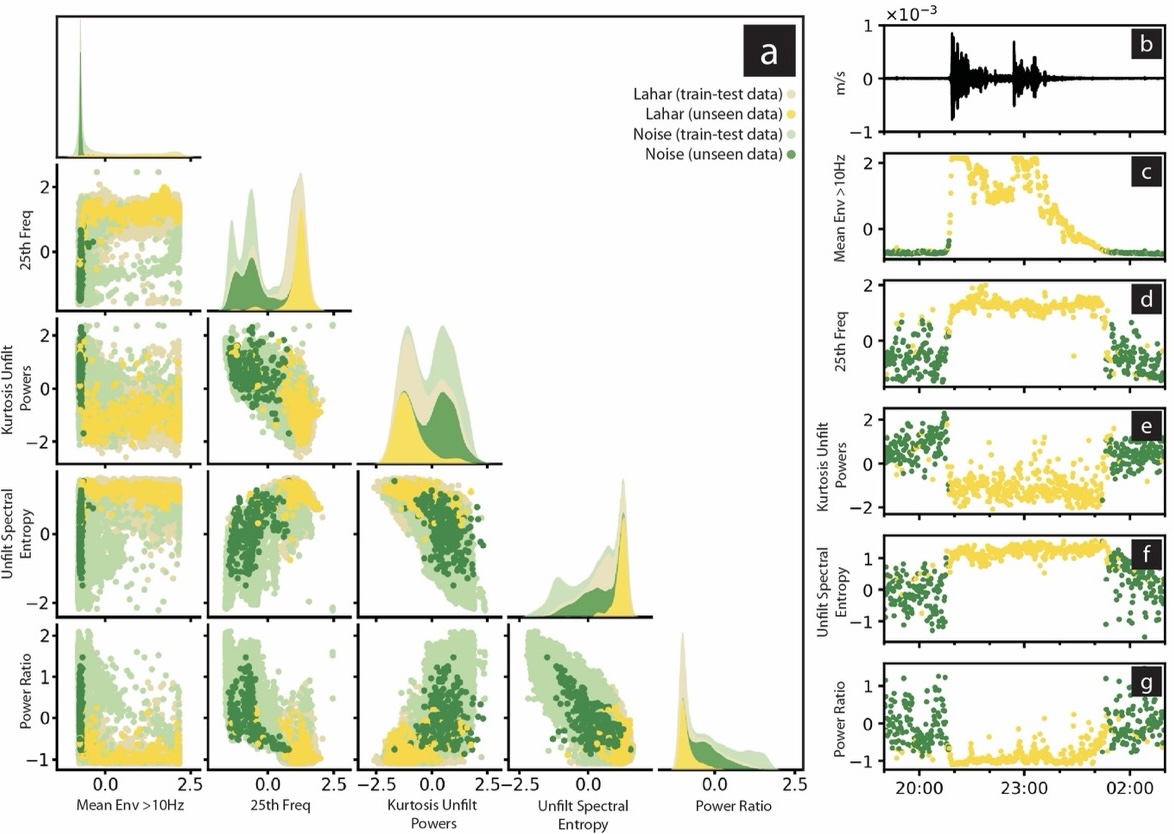🌋 Volcán de Fuego Lahars
As part of my PhD, I study lahars, fast-moving volcanic flows that threaten communities like those around Volcán de Fuego in Guatemala. I focus on three main tasks: 1) describing the seismology of these flows to develop machine learning-based lahar detectors, 2) estimating predictors for lahar initation and flow behavior based on rainfall data, and 3) numerical lahar flow models. Click below to learn more about my work.
1. LaharML: A Machine Learning-Based Flow Detector
Lahars are a family of volcanic sediment-laden flows that threaten communities around active volcanoes. They are difficult to detect and monitor, especially in remote areas. We developed a machine learning-based lahar detector that uses seismic data to identify lahars in real-time. The model is trained on a large dataset of seismic signals from lahars and other volcanic processes, and it can detect lahars with high accuracy. The model is currently being tested at Volcán de Fuego in Guatemala thanks to a collaboration with the local agency INSIVUMEH.
The figure above illustrates the operation of the detector. This is K-Nearest Neighbors (KNN) model that classifies real-time data depending on their similarity to a training set of seismic signals. To do this, it extracts features that describe the signal in the time and frequency domains, power ratios, and statistical functions. These features are samples from windowed data and the results undergo a post-processing validation that reduces erroneous classifications and returns lahar activity intervals.
This tool is currently being tested at Volcán de Fuego via INSIVUMEH. In addition, the methodology is being adapted to work with lahars at Santiaguito, and other types of flows such as pyroclastic density current. Furthermore, this work is currently in the process of submission for peer-review.
2. Rainfall controls on lahar generation and propagation
Lahar activity at Volcán de Fuego is strongly influenced by rainfall. Because these flows are typically triggered during intense or prolonged rainfall events, understanding precipitation patterns is key to improving lahar forecasts and hazard mitigation. We are exploring how both the occurrence and physical characteristics of lahars respond to rainfall input, using rain gauge measurements and seismic data from stations along the lahar pathways.
The figure above shows a comparison between rainfall accumulation and seismic lahar detections over a multi-year period. Each colored dot represents a detected lahar, with its position corresponding to cumulative rainfall, flow duration (left), or seismic energy (right). We observe that lahars tend to cluster during the rainy seasons, and their intensity—measured here as flow duration or energy—generally scales with the amount of antecedent rainfall. This suggests a threshold behavior where wetter conditions not only make lahars more likely but also influence their dynamics and size. Ongoing work is focused on deriving intensity–duration thresholds and exploring how rainfall structure (e.g. bursts vs. steady rain) controls lahar evolution.
3. Lahar flow modeling and comparison with geophysical data
Coming soon

